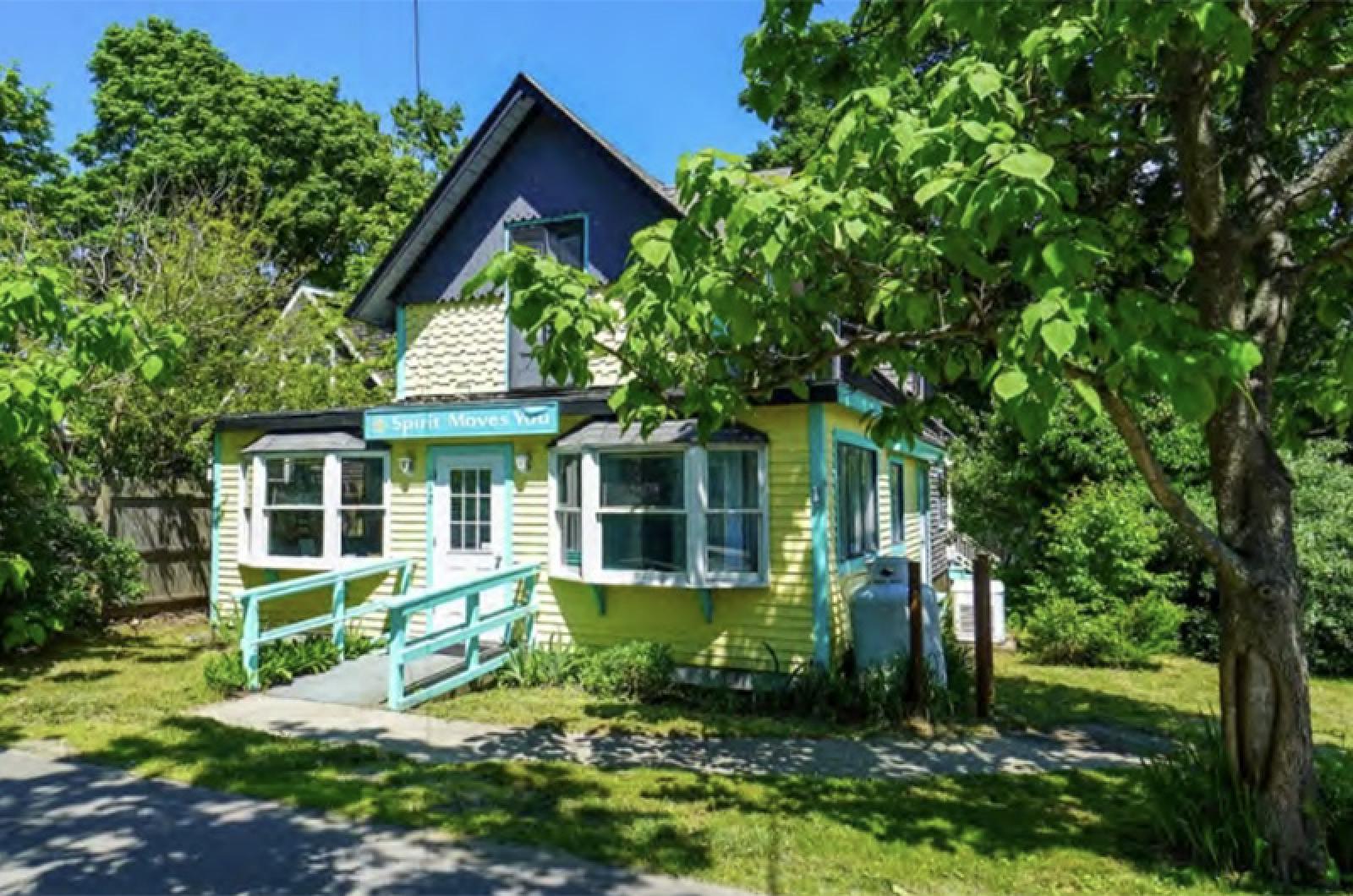The Martha’s Vineyard Commission is retroactively reviewing the demolition of a historic Oak Bluffs cottage that was torn down prior to referral, causing confusion and raising procedural questions at public hearing Thursday night.
The 3,200-square-foot home at 112 Dukes County avenue built in the Victorian eclectic style dates to 1880. It had been used for yoga, massage and retail before it was torn down in January.
The building owners are Ryan and Abigail Dillon, who bought the property for $667,000 in August 2020, according to assessors’ records. They also own a nearby property at 116 Dukes County avenue.
According to a commission staff report, the Oak Bluffs building inspector issued a demolition permit in January after the Oak Bluffs historic commission determined that the building was not historically significant. The demolition of the house and a shed, and construction of a new foundation, took place soon after.
Two months later, in March, the Oak Bluffs planning board alerted the commission to the demolition, commission executive director Adam Turner told the Gazette.
Under MVC rules, local boards and building inspectors are required to refer the demolition of homes over 100 years old for commission review. An exception is made for buildings that lie within town historic districts.
Although Mr. Turner initially sent a letter to applicants saying that the building was within a town historic district and did not require commission review, he followed up with a second letter on April 1 reversing course.
“After more consideration we have concluded that the property is in fact not in a historic district and should have been and must now be referred to the Martha’s Vineyard Commission,” Mr. Turner wrote.
The Oak Bluffs building inspector immediately issued a work-stop order, freezing construction on the property.
Although the property lies outside Oak Bluffs Cottage City or Copeland historic districts, the commission considers the Dukes County avenue neighborhood important due to the age and character of its buildings, according to historic preservation planner Christina Mankowski. Commission staff said the building represented Cottage City’s expansion, and rated it a 24 out of 38 on its review matrix, moderate in significance.
The house was also listed on MACRIS, the state historic building database.
“It’s pretty cut and dried,” Mr. Turner said before the hearing Thursday. “We have to review it.”
He said the demolition only came to his attention in March, and he did not know why the building department did not refer the project to the commission.
On Thursday, members of the town’s historic district commission said there had been confusion about whether the house was in an official historic district, and also about the commission referral process.
Commissioners also expressed confusion.
“It’s not clear to me what we’re doing here,” commissioner Ernie Thomas said. “This was supposed to be voting on whether they can demolish this house or not . . . but it’s gone.”
But public hearing chairman Fred Hancock said the DRI checklist triggers are clear, and he said the town, not the commission, had erred.
“The Oak Bluffs historic commission is taking liberties,” Mr. Hancock said in part. “I think they really do need to pay attention to what our DRI checklist says . . . I would certainly blame the historic commission and the town building department for putting this applicant in this position.”
The commission can vote to approve or deny the demolition retroactively, while considering plans for the new structure on the site. The applicants have proposed a slightly larger, 3,500-square-foot house with three one-bedroom apartments on each floor. The first floor would have commercial and residential space.
The applicants own a cabinetry and woodworking business, and intend to use the apartments for work force housing, according to testimony Thursday.
Attorney Robb Moriarty, who represents the applicants, said at the hearing that the homeowners had received all necessary permits before demolition and tried to salvage the house before finding rot. He pressed the commission to approve the project.
“Ryan and Abigail followed the rules every single step of the way,” Mr. Moriarty said. “This was not a significant historical structure. In fact, it was termite and mold ridden . . . the proposed building is a vast improvement as to what was there.”
Two historic district commission members reiterated the belief that the house was not historic, and praised the proposed project. Neighbor Leah Brown also voiced support for the new house.
“They are taking down an old, dilapidated building and making it more beautiful,” Ms. Brown said.
Neighbor Candy Nichols had another view.
“The project is too big. It’s too high, and it’s too big,” she said. “There should have been some more information about whether it could be saved or not. This beautiful historic house is now gone.”
The hearing was closed, with the written record open for one more week. The commission has asked the applicants to submit a written proposal for their housing plan.
In other business, the commission opened and continued a public hearing on the proposed demolition of a historic house on East Chop at 119 Mill Square.







Comments (7)
Comments
Comment policy »